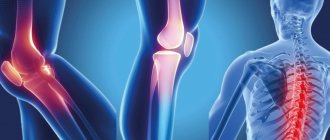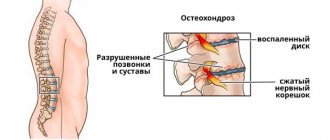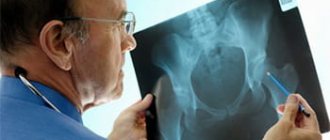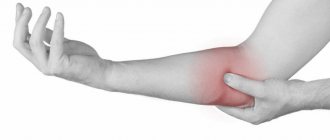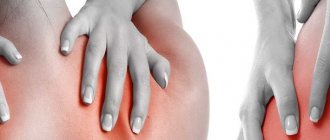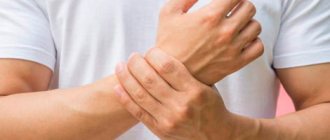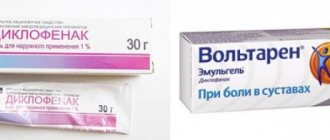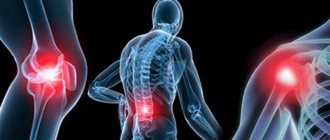Many people, of different ages and degrees of involvement in sports activity, experience joint discomfort in cold weather. Let's look at the reasons for this phenomenon and see how to avoid or at least significantly reduce exacerbations of joint pain.
- Why does an exacerbation of diseases occur in the fall?
- Research on autumn joint pain
- Where do you feel joint pain in cold weather? Test yourself.
- How can runners relieve joint pain in cold weather?
- How to relieve pain from arthritis and arthrosis
Why does an exacerbation of joint diseases occur in the fall?
There are several reasons for autumn joint pain.
1. Decreased physical activity. With the arrival of cold weather, rainy weather, the appearance of the first frosts and ice, our physical activity inevitably decreases. The joints work less, they do not “warm up”, blood circulation slows down, and the joint fluid lubricates the joint less well. A joint that does not receive enough nutrition begins to wear out and hurt.
2. Cold. With autumn comes the first cold weather. Moreover, if we are already mentally prepared for the winter cold and dress warmly, then in the fall we carelessly forget to warm ourselves. A decrease in temperature causes spasm of the muscles located around the joint. The result is impaired blood flow and metabolism, lack of nutrition to the joint. In addition, autumn weather provokes a decrease in immunity, which means it increases the risk of infectious diseases. The infection causes inflammatory processes, including in the joints. Chronic inflammation also makes itself felt.
3. Stress. Temperature changes become an inevitable shock for the body. Stress weakens all body systems, including immune, metabolic, and muscle systems. All this, one way or another, provokes an exacerbation of diseases. And joint diseases are no exception.
Dmitry Raevsky, head of the international center for psychosomatics “Zdravnitsa,” suggests looking at autumn joint ailments as a whole: “From the perspective of integrative medicine, the cause of autumn pain in the joints is a burdened constitution. Previous illnesses and illnesses of parents do not allow a person to feel good during periods of weather changes. Modern medicine offers painkillers and physical therapy without addressing the cause. What can be done here and now: protect yourself from cold and dampness, sleep on the most comfortable bed, avoid unusual stress, as well as spicy, pickled, spicy foods.”
Seasonal allergies and knee pain
Many people don’t even realize it, but sometimes pain affecting the joints is one of the manifestations of allergies, which also tends to worsen in the autumn. Triggers of food allergies, and with it pain in the knees or elbows, are considered to be foods that contain the following components:
- sugar (activate the production of cytokines in the body, which contribute to inflammatory processes);
- saturated fats (cause inflammation in fatty tissues);
- trans fats (provoke systemic inflammation in the body);
- omega-6 fatty acids (their excess leads to the progression of arthritis);
- refined carbohydrates (activate the production of substances that enhance inflammatory processes, including in joints);
- alcohol (alcohol abuse also increases various types of inflammation).
In the fall, people suffering from arthritis or seasonal joint pain should avoid eating foods containing these ingredients. It is possible that the cause of the malaise may be a food factor.
Research on autumn joint pain
In a 2014 study of nearly 3,000 older adults with osteoarthritis published in BMC Musculoskeletal Disorders, two out of three believed weather conditions affected their joint pain. Of these people, 30% report being sensitive only to cold (see full study at https://www.self.com).
There's still not enough research to explain why people feel joint pain in cold weather, but experts have a few theories. “Research shows that in colder weather, the body retains heat and it sends more blood to the heart or lungs,” said Armin Tehrani, MD, orthopedic surgeon and founder of Manhattan Orthopedic Care. “When this happens, the blood vessels in the arms, legs, shoulders, knee joints narrow,” he says. “Reduced blood flow makes these areas colder and stiffer, which can cause discomfort and pain.”
Another common theory is that when it is cold and/or wet, changes in barometric pressure can cause an inflammatory response in the joints. This reaction can lead to increased joint pain due to changes in blood circulation and possible sensitivity of nerve fibers.
Patients are counted in the fall
Rheumatologists know that every time bad weather hits, they will have an influx of patients. And the patients themselves can predict weather changes no worse than barometers based on their condition. Why are exacerbations of joint diseases associated with the first cold weather?
There are at least three reasons. The first is hypothermia. Cold causes a reflex spasm of the muscles surrounding the joint. Because of this, blood flow decreases, the cartilage receives less nutrition and its destruction accelerates. In addition, due to hypothermia, the risk of infectious diseases increases, which can lead to inflammation in the joints. Therefore, in cold weather it is very important to dress so that, on the one hand, you do not freeze, and on the other, you do not sweat. Modern synthetic materials will help with this - light, warm and breathable.
Steps without pain. What injections do joints need? Read more
The second reason for exacerbations is injuries. With the first frost, the risk of falls increases. And all ice injuries - fractures, dislocations, meniscal or ligament tears - increase the risk of arthrosis in the future and worsen the course of an existing disease. Therefore, if it is frozen, you must wear shoes with stable, grooved soles and move slowly, slightly bending your knees and avoiding slippery areas. When going shopping on such days, it is better to take with you not a bag, but a backpack. Your hands should be free - if something happens, they will help you maintain your lost balance. In general, if possible, in icy conditions it is better not to leave the house at all.
How can runners relieve joint pain in cold weather?
Regardless of the cause, many people experience stiffness and pain during the winter. But there are simple exercises you can do to make cooler weather less likely to bother your joints.
1. Be sure to warm up on time before running outside in cold weather or other exercise for at least 5 minutes. For example, take up brisk walking before you even begin a specific warm-up.
After a few minutes of walking, you can begin dynamic stretching movements such as high knees, glute kicks, or forward lunges.
2. Proper warm-up and stretching will help maintain flexibility, which is important for preventing stiffness from turning into injury.
Joint pain itself does not necessarily lead to injury, but if the pain is caused by stiffness and you don't address it and the condition gets worse, it can lead to injury.
3. While running, if you stop and take breaks, your joints and muscles can become stiff as your body temperature drops, so perform dynamic movements even during breaks in your run to stay warm and flexible.
4. After running, it is also important to ensure that you include proper cooling followed by stretching.
5. On very cold days, consider exercising indoors. Instead of clattering along the snowy pavement, jump on the treadmill or other cardio machine, or try this low-impact workout at home. If your body is telling you that certain running conditions are uncomfortable or even painful, listen to it.
This also applies to people with certain underlying medical conditions, such as those with rheumatoid arthritis or Raynaud's disease, a disease affecting the blood vessels that often occurs in cold conditions.
Of course, if you regularly do stretching and warm-up exercises but still experience joint pain, talk to a podiatrist or physical therapist to make sure you're not injured. It's important to remember that pain is your body's warning system and you need to listen to it. Persistent joint pain can be an early sign of arthritis, and it's best to treat it early.
Why do my joints hurt in the fall?
Komsomolskaya Pravda gives advice on combating seasonal joint pain
Photo: Evgenia GUSEVA
— Seasonal pain is a big problem. But it comes from the fact that people start their muscles much earlier. The joints are supplied with nutrients and oxygen through the blood. If the muscles around the joint are atrophied and not trained, then microcirculation is disrupted and nutrition is not supplied. Joint degeneration occurs and it begins to hurt. Try not to feed your stomach, it will also react to this with indignant pain. The joint does the same.
Joint dystrophy also affects thermoregulation. A normal healthy person does not have problems with temperature changes, because the muscles react to it normally, the blood supply is not disrupted, and pain does not occur. While for an untrained person, the first warning sign is, as a rule, seasonal pain. Moreover, this happens not only in the autumn, but also in the spring, when there is a transition from cold to warmth.
If a person is still burdened with excess weight, the problems may worsen even more. In addition, people with metabolic disorders and thyroid problems should think about their joints as early as possible. All this can also affect joint dystrophy.
Heating cannot be cooled
— In cold weather, many doctors advise not to overcool sore joints, but to wrap them in warmth. And the first thing people try to do when they feel pain is to make a warm compress, apply burning ointments that create a warming effect, and so on. These are all wrong moves.
Why does temporary relief occur when the sore joint is heated? Because the effect of normal thermoregulation is created, the vessels dilate slightly. But this does not solve the problem, because the muscles from the heat only become sluggish, but not healthy. They always need to be trained. If you start giving your muscles at least minimal loads, microcirculation improves. The pain gradually begins to go away.
Alternating between heat and cold
— Advice on how to get rid of pain is simple and at the same time difficult for many. In fact, joint pain has a common nature with a bruise. Why do we never apply a heating pad to a bruise, but apply cold? Because it relieves swelling. So why are we afraid of the cold when it comes to joint pain?
In response to the cold, our body begins to give off heat, increasing blood circulation. This reduces pain. Only the time of cold exposure should be short - from three to 10 minutes, no more. The main thing is to decide on it. If you’re really scared, you can alternate between heat and cold.
But you always need to start cold. And do the same intervals. Otherwise, some will keep the cold for a minute, and the heat for half an hour. The effects of cold after a sauna or steam bath are especially good. Thanks to the effects of cold water after the steam room, ligaments and muscles stretch much better and safer.
In addition, cold water reduces body temperature in the area of inflamed muscles, restoring microcirculation of diseased body tissues. Not to mention that cold water improves immunity. That’s why I recommend taking a short-term cold bath every day, immersing your head in water for literally 5-10 seconds.
BY THE WAY
— Doctors have calculated that women are more likely to suffer from small peripheral joints, and men are more likely to have problems with the spine.
— In cold, damp areas (for example, on the coast of the northern seas) diseases occur twice as often as in dry areas of the same country.
— Hereditary joint diseases exist. But not because they are passed on from generation to generation, but because children inherit the characteristics of tissues and muscles, on which the health of the joints depends.
Symptoms and signs of joint diseases
The most common joint diseases are arthritis and arthrosis. They have various distinctive features.
Arthritis
It can occur acutely, especially in the autumn. It flows and develops rapidly. Can be completely cured with proper treatment. If this is not done, arthritis very quickly becomes chronic with remissions and attacks.
The basis of this disease is always damage to the joint by some kind of infection.
You may notice that in the fall, infections spread often and quite quickly, therefore, the occurrence of arthritis in the fall is not uncommon.
Arthrosis
With this disease, the cartilage of the joint is destroyed. After this, the cartilaginous layer is gradually replaced by bone growths. This disease is associated with changes in blood vessels, which are often observed with hypertension, varicose veins, atherosclerosis, and diabetes. In autumn, diseases of the vascular system are also especially aggravated, so arthrosis may occur.
Features
Osteoarthritis usually affects the shoulder, hip and knee joints. The pain may intensify when walking if there is inflammation of the hip joint, and when bending - in cases of knee disease. A crunching sound may be heard when moving. At rest, there is no pain.
With arthritis, pain occurs suddenly and spontaneously. After this, it persists both during movement and at rest. There is swelling of the soft tissues in the area of the inflamed joint.
The skin over the sore spot may become shiny. The patient's body temperature rises, and the area above the joint becomes especially hot.
With this disease, there may be poor results of blood tests - increased leukocytes and ESR.
Loads without overload
However, this does not mean that with the onset of cold weather, people with arthrosis need to barricade themselves within four walls and wait for spring, lying on the sofa. After all, the third reason for seasonal exacerbations of joint diseases is a sedentary lifestyle, which in winter becomes commonplace for many. The periarticular muscles, which take on part of the load during movement, weaken without regular use, and blood circulation in them slows down, causing the cartilage tissue to lack nutrients. In addition, during the cold season, there is an acute deficiency of the sun, and therefore of vitamin D, which is necessary for the musculoskeletal system. In this case, even minimal daily physical activity can lead to microtrauma of the articular cartilage, and then to pain in the joint.
How to get rid of arthrosis. Gymnastics for knee joints Read more
Good ways to combat physical inactivity with arthrosis are exercise therapy and yoga, which you can do even at home. And of course, don’t forget about physical activity in the fresh air. This is not only traditional winter skiing, but also all-season Nordic walking. And just walking. Well, if exacerbation of arthrosis could not be avoided, you need to be treated correctly. Nonsteroidal anti-inflammatory drugs (NSAIDs) can help relieve severe pain. But since they can have a bad effect on the gastric mucosa, they should be taken in the minimum effective dose. And for additional pain relief, you can also resort to effective local remedies (ointments and gels, for example, based on viper venom). After the acute period has passed, we must immediately attend to the prevention of the next exacerbation of arthrosis. To do this, you should combine the use of medications (in particular, chondroprotectors) and auxiliary methods (mud therapy, physiotherapy, massage, acupuncture, kinesitherapy).
Three threats to joints. How to prevent autumn aggravation
Articles / If you have problems with joints, in late autumn you need to especially carefully monitor your health. Exacerbation of arthrosis and arthritis at this time is not at all uncommon. Why does this happen and how to avoid it?
Threat #1:
cold Arthritis, that is, inflammation of the joints, can occur against the background of complete health. But, if you ask people suffering from it under what circumstances they first encountered the disease, many will say: “I was frozen, I got ARVI, and after that it started...”. And some did not get sick - just hypothermia was enough. With prolonged exposure to cold, the immune defense weakens, which creates conditions for the development of inflammation, including in the joints.
With arthrosis, there is no inflammation in the joints (or it is much weaker than with arthritis), but metabolic processes in the articular cartilage are disrupted. The substances that make it durable are destroyed faster than they are formed. In this case, the cold is dangerous because it causes a reflex spasm of the muscles surrounding the joint. Because of this, the blood flow to it decreases, the cartilage does not receive the nutrition necessary to build new cells, and destruction accelerates.
Hypothermia seems to be a winter problem. In fact, by winter we already get used to the fact that it is frosty outside, and we dress accordingly. But in the mid-season, relatively warm days alternate with cold ones, so there is a high risk of not choosing the right outfit.
What to do?
Make it a rule to dress “like a cabbage” so that when it warms up you can take something off. Another option is to carry an extra sweater. Make sure that problem joints and feet are warm: cooling them negatively affects the immune system, even if the rest of the body does not freeze.
If hypothermia occurs, upon returning home, it is useful to take a warm (but not hot!) bath: it will not only help you warm up, but also relax your muscles. Problematic joints can be lubricated with warming ointment, which also relieves muscle spasms and activates blood circulation.
Threat #2: Falls
The first autumn frosts are associated with problems such as ice. Falls and associated fractures, dislocations, tears and tears of the meniscus or ligaments increase the risk of arthrosis in the future. This is one of the few cases where the disease can develop even in very young people. If the person is elderly, the injuries are even more dangerous, because the natural restoration of the cartilage tissue of the joints is greatly slowed down.
What to do?
If you know it's slippery outside, wear shoes with stable, ridged soles. It is better for older people not to go out at all if possible. If you are taken by surprise by the ice (it was warm in the morning and frozen in the evening), try to avoid slippery areas as much as possible. This is impossible? Then bend your knees slightly and walk slowly, resting your weight on your entire foot. You can glide a little like a skier, but always without haste and with a very small amplitude. Refrain from shopping so as not to carry bags in your hands, and do not put your hands in your pockets - this will make it easier to maintain your balance.
Threat #3: Lack of Movement
During the cold season, our level of physical activity is greatly reduced due to bad weather, ice, and short daylight hours. A sedentary lifestyle weakens the muscles that support the joint and take some of the load off it. Because of this, even ordinary everyday activities (cleaning a room, going to the store) can lead to microtrauma to the articular cartilage. In addition, with a lack of movement, blood circulation slows down, which means the joint does not receive the nutrition it needs.
What to do?
Patients with arthrosis or arthritis are usually recommended special exercises. Many people, having done the exercises for a couple of weeks after an exacerbation, then forget about them. If you are one of these careless patients, it's time to resume training. If you exercised conscientiously every day, the complex can be expanded or the duration of classes increased.
You can also do yoga or Pilates at home. And when it’s a nice day, go for a walk. This will not only maintain muscle tone and improve joint nutrition, but will also allow you to get enough vitamin D, which is necessary for the health of the musculoskeletal system. To prevent and treat injuries and diseases of the joints, it is necessary to adhere to an orthopedic rest regime.
ORTO joint fixators of varying degrees of fixation allow you to protect joints from possible injuries and reduce the time of treatment and rehabilitation. The use of fixators will reduce the load on the affected joint, ensure its fixation in a functionally advantageous position and improve blood circulation through warming and micro-massage. All joint fixators of the ORTO brand are designed taking into account modern ideas about the biomechanics of movements and are produced using modern technology from high-quality materials, which ensures the durability of the products, ease of use, ease of handling, practicality and hygiene.
Autumn exacerbation
Scientists have long proven the relationship between human well-being, the time of year and weather conditions. Indeed, many people experience joint pain in the fall, or this existing pain increases with the onset of the fall season.
This is due to the negative impact of high humidity due to constant rain on the human body . Also affected by sudden temperature changes and strong cold winds. These factors aggravate diseases of the musculoskeletal system.
Prevention of joint diseases in autumn
In order to avoid the occurrence or exacerbation of joint diseases in the fall, you should follow some recommendations from specialists:
- First of all, you need to try to reduce the load on your joints and give them more rest;
- Since excess weight is one of the causes of joint diseases, it is recommended to maintain a proper and balanced diet;
- Sudden movements should be avoided, especially if an exacerbation has already begun;
- You can take relaxing baths with sea salt, but only for prevention and if there are no exacerbations;
- In the fall, you can take various vitamin complexes and use a variety of joint creams.
If the disease has already occurred, then it is best to consult a specialist who will make an accurate diagnosis and prescribe the correct treatment. You should not wait for the season to change in the hope that the pain will subside.
When treating arthritis, first of all they try to eliminate the infection that caused the disease. For this purpose, antibiotics, vitamins and agents that have an anti-inflammatory effect are used.
In cases of arthrosis, it is necessary to establish the exact cause that caused the disease. Also, anti-inflammatory drugs are prescribed and vascular therapy is selected. For severe pain, special ointments can be used. In severe cases of the disease, surgical treatment may be necessary. Now you know why pain may appear.
